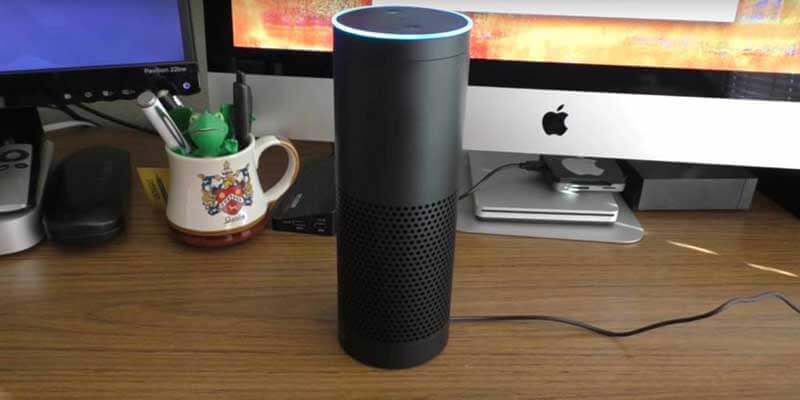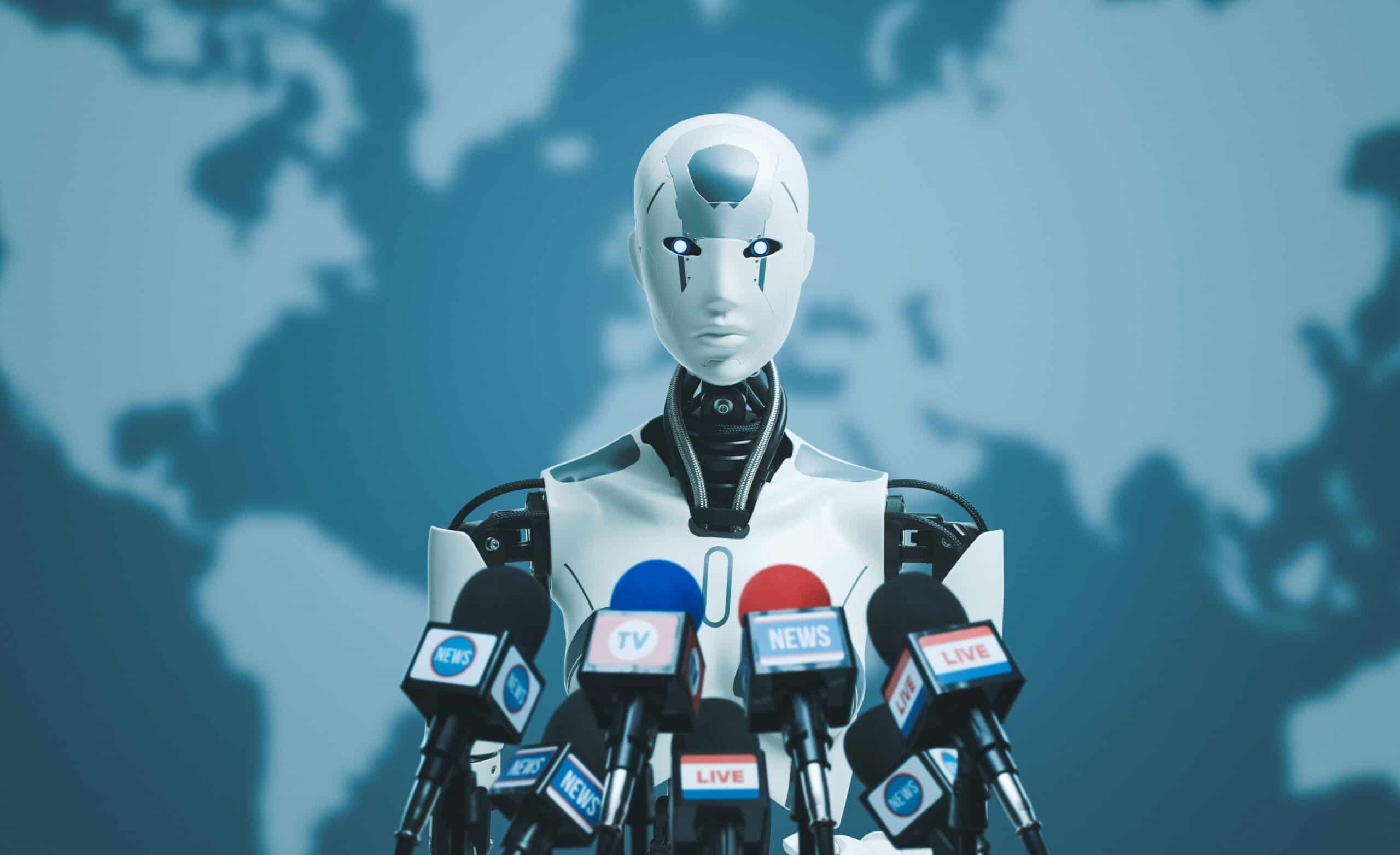- Criminals exposed by smart devices and the Internet of Things
- Artificial intelligence helps detect frauds
- Predictive policing: preventing crimes before they happen
- Facial recognition tech can make you obey the law
- Robo-cops are here, and they’re real
- New tech knows you better than you know yourself
Sherlock Holmes and Hercule Poirot rely on a magnifying glass and a sharp mind to solve crimes. But if these fictional characters were put into a contemporary setting, their strategy to fight crime would have to be modified, to say the least. It would probably involve not only a search for ‘conventional’ pieces of evidence, such as fingerprints or video footage, but they’d also be looking for the digital footprints a suspect leaves when using smart gadgets. And this is something the police worldwide are already doing – fighting crime using state-of-the-art tech, from smart devices, to artificial intelligence (AI), to intelligent robots.
Criminals exposed by smart devices and the Internet of Things
We just love our gadgets. Fitbit ensures we stay healthy by monitoring our physical activity and tracking how many steps we take; it even knows when we sleep. And we can’t seem to imagine our lives without smart speakers such as Amazon’s Echo or Google Home. They’re telling us the news while we’re getting ready for work, or even ordering a pizza for us when we just don’t feel like cooking. However, what most of us don’t realise is that those smart devices are tracking our every move and can be used as evidence of our activities. Andy Kleinick, the head of the Los Angeles police department’s cyber crimes section, says that everyone is being observed in some way. “I think everyone realises – good guys, bad guys, cops, robbers – that everything is being videotaped or tracked somehow.”
And a number of people were caught thanks to data found on their smart devices, Forbes reports. For instance, Richard Debate was charged with murder of his spouse, after his wife’s Fitbit exposed his lie – “that a masked intruder assaulted him and killed his wife in their Connecticut home”, The Guardian reports. Kleinick noted that, with all the smart gadgets we carry around, it’s become difficult to commit a crime. And even police departments have become more interested in leveraging smart technology to find digital evidence. Kleinick and his team are teaching detectives and police officers about digital evidence and where to direct their attention at crime scenes, because anything from smartwatches, to fitness trackers, to gaming consoles contains data that can be used as evidence. The demand for his courses is huge. “We can’t keep up with the demand. Soon I’ll be teaching full-time because the [LAPD] chief wants everyone to have some form of cyber-training,” noted Kleinick. However, there are always those who fight any kind of change, and Brian Jackson, a criminal justice scholar at the Rand Corporation, said that “police departments, especially smaller ones, struggle to keep pace with the technology”. But with all the opportunities that smart tech offers, there’s no doubt they’ll soon become a weapon of choice against crime.

Artificial intelligence helps detect frauds
Artificial intelligence (AI) and machine learning are no longer just ‘buzzwords’, nor are they novelties we’re still excited about because we don’t know what to expect. In fact, they’re widely used across sectors – including security. We do however need all the help we can get to be able to fight any type of crime. Just last year, according to the Javelin Strategy & Research report, “some 15.4 million consumers were victims of identity theft or fraud”. But thanks to AI and machine learning, we can now mitigate fraudulent activities and possibly eradicate them altogether. Supervised machine learning (SML) models for fraud detection are being fed torrents of data to be able to differentiate between ‘clean’ and ‘fraudulent’ accounts and activities. But since criminals always tend to find new ways to get around SML systems, new data must be continuously added to the system, and, as Ravi Sandepudi writes, “the fastest way to act would be to write customised rules to detect new fraudulent behaviour”. Sandepudi explains that, in contrast to SML, unsupervised machine learning (UML) models “are great at learning sequences and predicting what event would most likely occur next”. As every criminal tends to work in patterns, UML might help officials detect these modi operandi. Both SML and UML will continue to evolve and, hopefully, criminals will be caught before they can hide.
Predictive policing: preventing crimes before they happen
The concept ‘predictive policing’ has a bit of a Minority Report feel to it, but for those who haven’t watched the movie, predictive policing prevents crime before it happens. And some police departments have already been equipped with predictive policing programs. Homewood, Pittsburgh, has begun using maps based on algorithms developed by scientists at Carnegie Mellon University to help them locate places “where crime is likely to happen”. Contrary to what most might be thinking, it has nothing to do with predicting the future. William Isaac, an analyst at the Human Rights Data Analysis Group and a Ph.D. candidate at Michigan State University, pointed out that “They’re not predicting the future. What they’re actually predicting is where the next recorded police observations are going to occur.” And it’s not just Pittsburgh that’s testing the ‘predictive policing’ smart algorithms. For instance, Philadelphia and Miami have begun using HunchLab, “a web-based proactive patrol management system”. HunchLab was embraced in 2014 by the St Louis County Police Department, after the Ferguson shooting. HunchLab provides “lists of types of crimes”, points at “the level of risk for different city areas”, and provides “recommendations about deploying police resources to counter these criminal activities”. But not everybody is excited about it.
Many civil rights and legal experts point at the other side of the coin, claiming that “predictive technology stokes community resentment by unfairly targeting innocent people, minorities and the vulnerable”. Matthew Harwood and Jay Stanley of the ACLU wrote that “Civil libertarians and civil rights activists… tend to view [predictive policing technology] as a set of potential new ways for the police to continue a long history of profiling and pre-convicting poor and minority youth.” But, as reported in WIRED, machine learning can, to a great extent, assist the police by pointing out crime patterns once they are identified, which can help prevent crime. And that’s its main purpose – to stop crime before it happens.
Facial recognition tech can make you obey the law
Facial recognition technology offers immense potential when it comes to security. It’s based on scanning facial features, ranging from skin colour to eye shape, from hair colour to smile lines. Beijing-based startup SenseTime Co. sells its tech to the police as ‘advanced surveillance systems’. But while there are positive sides to this technology – as it offers the possibility to identify criminals – it’s used to ‘force’ citizens to obey the law. For instance, in the city of Jinan, pictures of jaywalkers are broadcasted to shame them into obeying traffic laws, and as Xinhua reports, “Within 20 minutes, the offender’s photograph and personal information such as their ID number and home address are displayed on the screen at the crossroad.”

Robo-cops are here, and they’re real
In order to fight crime, the Dubai police are planning “to have robotic officers make up a quarter of the force by 2030”, Forbes reports. They have touchscreens with which anyone will be able to report a crime. And these robots are pretty smart, too. They speak six languages and can tell whether a person is upset as they can read facial expressions. It’s important to “find a new way to deal with people”, said Brigadier Khaled al-Razzooqi, the head of Smart Services at Dubai police. But their ‘human’ colleagues will still take care of arrests. Soon, we might see more robotic cops on streets worldwide.

New tech knows you better than you know yourself
While advances in machine learning and artificial intelligence offer a lot of options for reinforcing the existing security sector, many are still sceptical due to privacy concerns. However, with smarter algorithms, and systems based on AI tech, we are looking forward to a future free from crime.







